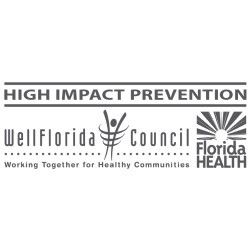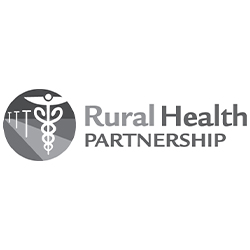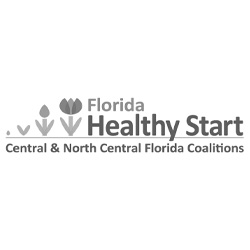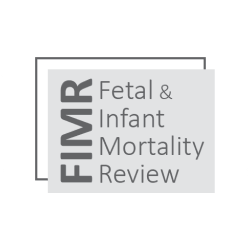Rethinking emergency care at core of health law
Gainesville Sun, January 8, 2012
You might think this is an emergency: Feverish, a sore that is oozing and skin that is extremely itchy.
With those symptoms, the exam room that Tiffany Williams entered last week was not in a hospital emergency department, but at the University of Florida Shands Eastside Community Practice.
“I feel like I’m home here,” said Williams, 35, of Gainesville, who works as a cashier at Food Lion. “And my doctors are wonderful.”
And it costs a fraction of what it would have had she gone to the hospital, according to some studies.
Williams’ experience is at the heart of how federal officials plan to knock down the growing cost of health care.
Getting the right care, in the right place at the right time — mostly trying to keep people out of hospital emergency rooms — is a big part of the effort to eliminate some $1 trillion from health-care costs in the next 10 years, said Anton Gunn, regional director of the U.S. Department of Health and Human Services, who was on a swing through Florida last month talking up the benefits of national health-care reform.
Not everyone is convinced, though.
Nevertheless, big developments are in store this year under the Affordable Care Act, the national health-care reform act that President Obama signed into law in March 2010 and is scheduled to be fully in force in 2014.
Whether it survives the year will be determined when the U.S. Supreme Court hears arguments on the health-care reform act’s constitutionality, probably sometime in March. A decision is expected in June. Assuming the law survives the challenge, hospitals will begin to experience more of the law’s requirements this year. They include:
The first regulations governing hospitals using electronic medical records.
Penalties in Medicare reimbursement for hospitals if a patient is re-admitted within a certain period after a hospitalization.
Avoiding hospitalization altogether is an overarching principle of the new law. That might be a tough sell, however, in an environment where coming in through the emergency room door is an increasingly popular option.
Figures from WellFlorida, an organization that tracks North Florida hospitals’ activity, show that Alachua County’s 2011 emergency room visits are on track to be nearly 13.5 percent more numerous than they were in 2009.
There are myriad reasons for that — with serious financial repercussions, considering that an office visit to the doctor costs, on average, $121, compared with the $560 cost of the average emergency room visit, according to a 2003 study by the U.S. Agency for Healthcare Research and Quality.
The Affordable Care Act’s efforts to head off escalating health-care costs include plans to invest in primary health care so that people will get their health care in the less expensive venue, according to HHS’ Gunn.
“If we can get people covered (with insurance), get them in a network of care, get them a provider who knows their name, we’re going to be a lot better off,” Gunn said. “It won’t solve every problem, but it’s a great foundation.”
In that vein, more primary care doctors have been hired at North Florida Regional Medical Center, and UF&Shands plans to move its Family Medicine at Fourth Avenue into a facility 40 percent larger at Family Medicine at Main, 1707 N. Main St.
But Mickey Rawls, an insurance agent and a former board member of the Eastside Community Practice, said the government is facing an uphill battle in changing how people approach their health care.
Primary care hours at the clinic have gone unused because people bypass them for the care that’s always available when they need it — the emergency room. “There are a lot of people walking around with a(n) (Eastside) card in their pocket, but they go to an emergency room,” he said.
Others think that the amount this primary care push will save in health-care dollars is vastly exaggerated, too. That’s primarily because the idea that people are going to the emergency room with the sniffles — and other primary care issues — is a misnomer, says Dr. Andrew Bern of Coral Springs, who is chairman of the board of the American College of Emergency Physicians.
He points to statistics from the Centers for Disease Control and Prevention that show just 8 percent of emergency room care is non-urgent and other statistics from the U.S. Agency for Healthcare Research and Quality that show emergency medicine in its totality accounts for just 2 percent of health care spending.
“Since the … (Affordable Care Act) is based on incorrect information, it’s going to fail,” he said.
Bern said that primary care doctors’ visits would be just as expensive as emergency room visits if they were required to do what ERs do: be open around the clock, take all comers and be able to conduct a wide range of tests, stat.
“They are comparing apples and oranges,” Bern said.
At North Florida Regional Medical Center’s emergency department, Dr. Gary Gillette said he thinks that even less than 8 percent of the people he sees are coming to see him with non-urgent issues. “Gainesville has a pretty well-educated community with a pretty good sense of when to come in” to the emergency department, he said.
Brian Schuetz, program director for New England Healthcare Institute, a national health policy institute, said the perspective of the emergency physicians’ professional organization is one way of looking at the numbers. He was the project leader on a report that came out last month: “Reducing Emergency Department Overuse: A $38 Billion Opportunity.”
What is missed in those numbers showing emergency medicine as a scant part of the health care pie, is the amount of health care that could be avoided if better primary care kept fewer emergencies from developing at all, he said.
“A lot of what we see as challenges for the health care system is the absence of treatment for ambulatory conditions,” he said, pointing out that managing diabetes, high blood pressure and obesity can be done with more primary care.
Dr. Marvin Dewar, senior associate dean and CEO of UF Physicians, said that the primary care at Eastside Community Practice is underutilized. A new patient can get an appointment in the space of a few days. “We have to do a better job of educating people and getting them to believe it’s not in their best interest to go to the emergency room when it’s not an emergency problem — it’s more expensive, there’s more wait and it’s not as effective,” Dewar said. “But it’s tricky — legitimately it’s not always clear to people that what they are experiencing is not an emergency.”
After looking over Williams’ oozing sore, Dr. Umar Ghaffar peppers her with a host of other health questions.
How long has it been since she had a pap smear? Has she had her flu shot? How much does she drink?
After hearing she drinks some wine, he offered her a little advice.
“Some studies we have show that a glass of wine — red wine — improves the HDL cholesterol,” he said.
Then he rendered a verdict on her sore: Antibiotics. And if gets any worse, come back and he’ll drain it.
Later, he said, “I did exactly the same thing the ER would do.”
To read the published article: Rethinking emergency care at core of health law
Back to News page











